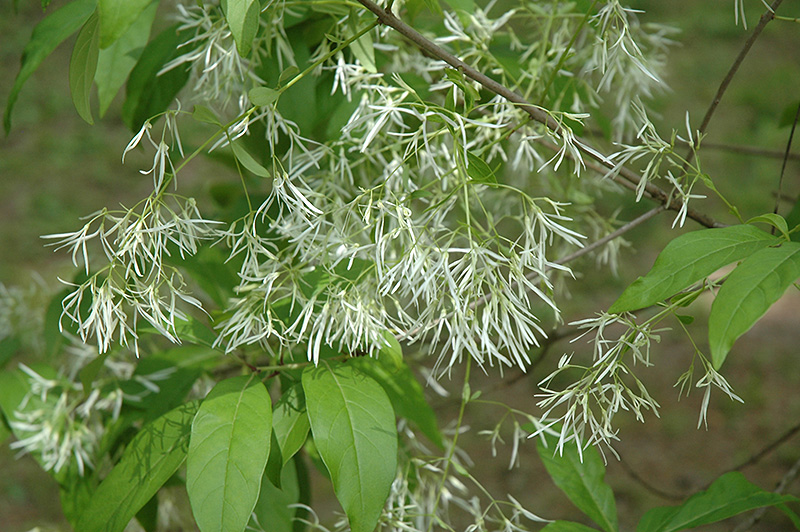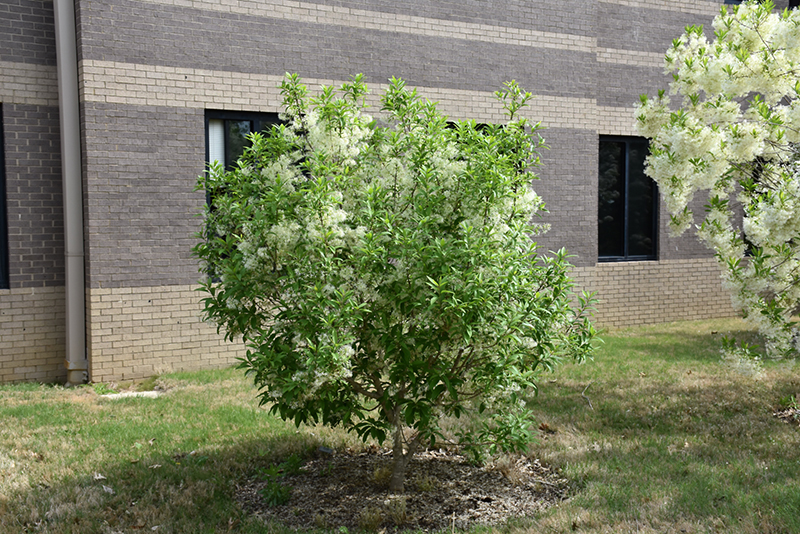Plant Finder
Spring Fleecing Fringetree
Chionanthus virginicus 'Spring Fleecing'
Height: 20 feet
Spread: 20 feet
Sunlight:
![]()
![]()
Hardiness Zone: 5
Other Names: Fringe Tree
Description:
A strikingly beautiful small multi-stemmed tree when in bloom, with frothy upright panicles of very fine strap-like flowers in spring atop the foliage, also attractive berries in fall and interesting bark for winter value; a wonderful landscape accent
Ornamental Features
Spring Fleecing Fringetree is clothed in stunning panicles of fragrant white strap-like flowers rising above the foliage in late spring. It has forest green deciduous foliage. The glossy narrow leaves turn yellow in fall. It produces navy blue berries from early to late fall. The peeling gray bark adds an interesting dimension to the landscape.
Landscape Attributes
Spring Fleecing Fringetree is a multi-stemmed deciduous tree with a more or less rounded form. Its relatively coarse texture can be used to stand it apart from other landscape plants with finer foliage.
This is a relatively low maintenance tree, and should only be pruned after flowering to avoid removing any of the current season's flowers. It has no significant negative characteristics.
Spring Fleecing Fringetree is recommended for the following landscape applications;
- Accent
- Mass Planting
- Hedges/Screening
- General Garden Use
Planting & Growing
Spring Fleecing Fringetree will grow to be about 20 feet tall at maturity, with a spread of 20 feet. It has a low canopy with a typical clearance of 2 feet from the ground, and is suitable for planting under power lines. It grows at a slow rate, and under ideal conditions can be expected to live for 70 years or more.
This tree does best in full sun to partial shade. It is an amazingly adaptable plant, tolerating both dry conditions and even some standing water. It is not particular as to soil pH, but grows best in rich soils. It is highly tolerant of urban pollution and will even thrive in inner city environments. This is a selected variety of a species not originally from North America.
Disclaimer - Rutgers Landscape & Nursery Plant Finder is an online resource representing many of the varieties that we carry over the course of the season, and is intended for informational purposes only. Inventory varies seasonally, so we cannot guarantee that every plant will be in stock at all times - please contact Rutgers directly for current availability.


